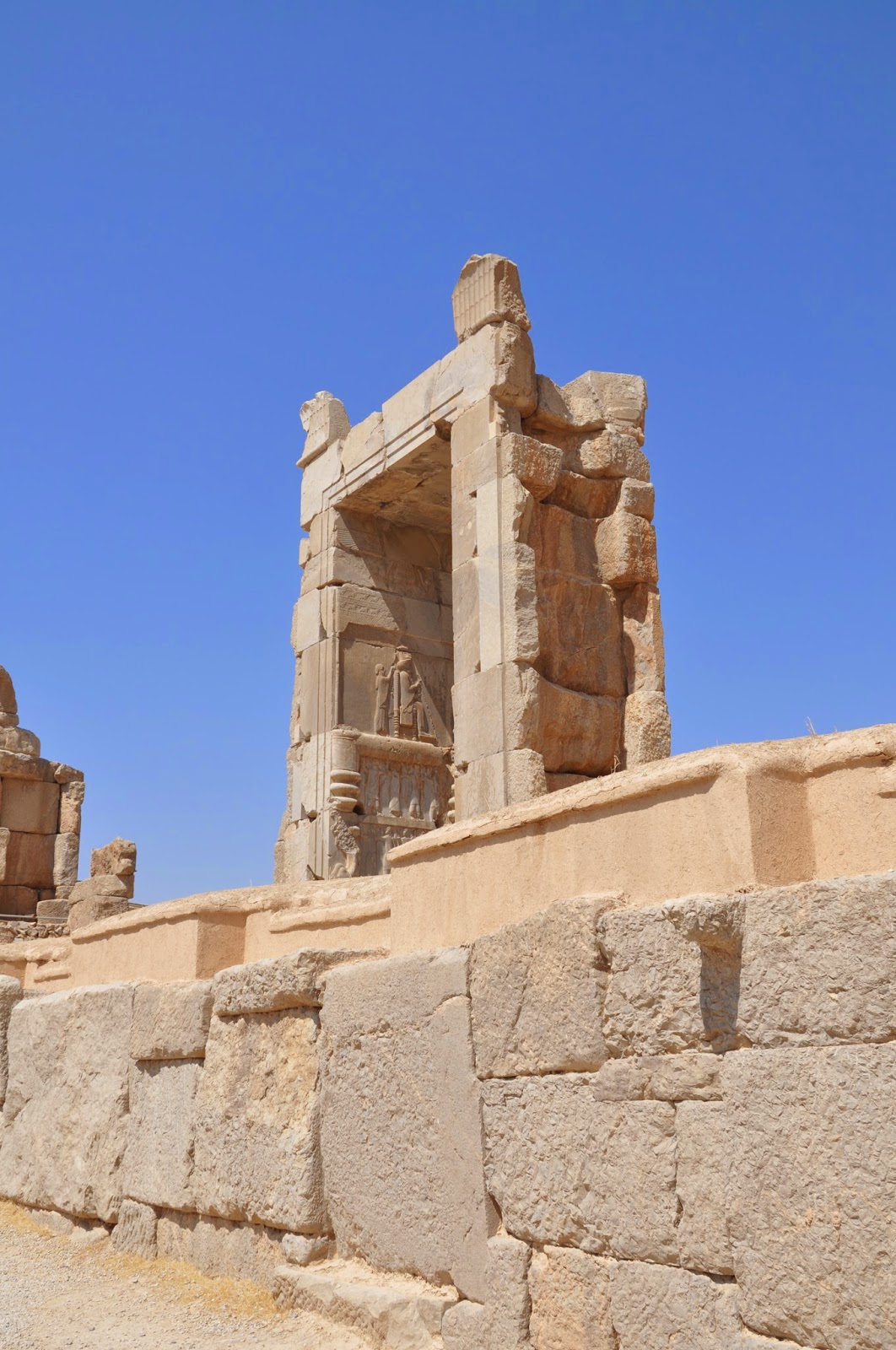(...)
If Apadana, which served as an "Audience Hall", must have undoubtedly been a magnificent and profusely decorated Palace where the King received the nobles of the empire and the delegations of the subject nations the Tripylon, its Council Hall (also referred to as the Three Gate Hall) judging from what could still be seen is equally magnificent to look at, particularly if one thoroughly examines the carving of its pillars - one depicting the King under a dais (symbol of the sky) being followed by two servants and the other one with the king on the throne with an anthropomorphic winged figure hovering over the Royal canopy, associated with Ahura Mazda.



Having taken more time than we were supposed to in the Apadana staircases we weren't given time enough (at least the one I am convinced the archaelogical remains required for us to thoroughly admire them) to visit what is left of the Winter Palace of Darius I (Tachara) built around 486 BCE, which is the best preserved and the Palaces of both Xerxes I (with a few columns standing up) and Artaxerxes III (359-338 BCE), which we just observed from the outside. I managed to take some photos of a few interesting details (servants carrying food), but certainly missed many more which I would have only come across had I walked into the inner area.

To be able to visit one of the Royal tombs uphill, which many of us did, we had to go across the Hall of the 100 Columns (probably constructed in 480-60 BCE) with its outstanding door-jamb reliefs showing the enthroned Achaemenid ruler.
We then went briefly across the low walls which mark the various Treasury buildings where tens of thousands of clay tablets are said to have been unearthed recording among various things the numbers, nationalities and wages of the Palace labourers but the main feature was the Audience Relief, which we had had the possibility of seeing in the Archaeological Museum the first day.
(To be continued)




























No comments:
Post a Comment